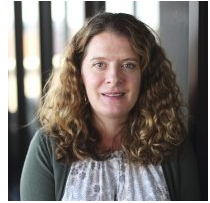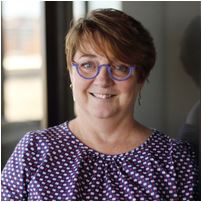By Karen Rivedal, WCER Communications
The pandemic-era pivot to remote instruction wasn’t easy for students and educators at any grade level, but a close study of impacts and adaptations for Dane County’s youngest learners suggests some changes are worth retaining, while problems remain.
Take parent–teacher conferences, for one example. Connecting online about a student’s progress was required when COVID-19 precautions barred face-to-face interactions. But it doesn’t take a health crisis for an internet-based option to make sense for many busy families, UW–Madison researchers note.

Additionally, even as online learning at home increased parents’ responsibilities for their preschooler’s education, it also gave them a deeper appreciation for the work that 4-year-old kindergarten (4K) teachers do.
“Many teachers and parents felt more closely connected to each other,” says Beth Graue, a professor in the Department of Curriculum and Instruction and director of the Center for Research on Early Childhood Education (CRECE), a project within the School of Education’s Wisconsin Center for Education Research. “How to sustain these strengthened parent–teacher relationships after the pandemic subsides is an important question raised by this research.”
A 4K teacher in the CRECE report said: ‘I had a lot of families taking pictures because I’d say, “Send some pictures — I miss you guys.” … Parents were connecting with me, asking questions, and consulting me about what they thought and what they should do, or what their kids needed before the end of the year.’
Conversely, one of the biggest challenges of the pandemic for Dane County teachers and parents revolved around not finding out, after fully remote shutdowns in spring 2020, whether 4K classes would be in person, virtual, or some combination for the coming school year until late August 2020, leaving many with little time to plan and prepare.
To some extent, this result and other bumps in the pandemic response may have been inevitable, the researchers stress, as district administrators and staff with good intentions struggled with a contagious viral outbreak that ebbed and flowed and mutated in unprecedented fashion.
“They were figuring out how to do virtual instruction with preschoolers while they were doing virtual instruction with preschoolers,” says CRECE Associate Director Amy Claessens, who is an associate professor with the Department of Educational Policy Studies and holds the Gulbrandsen Chair in Early Childhood Education.“They were just responding to these repeated public health crises.”

Sustaining pandemic pluses raises questions
The use of new communication technologies such as Zoom and Seesaw — a mobile app to share student work and communicate with parents about student work — wasn’t the only adaptation to yield some positive outcomes across Dane County’s 4K programs, which use a play-based model that provides activities for learning and development in language, early literacy, and math skills, as well as social skill development for more than 2,000 students at a mix of schools and community-based child care centers.
For some students, virtual 4K also seems to work especially well, the study notes, either as a full-time option or for short periods as needed.
And in a further happy surprise, 4K teachers found that practical requirements around remote instruction provided them with new opportunities, too,
including more planning time and increased collaboration with colleagues.
Said one 4K teacher in the CRECE report: ‘Another super positive change this year was, because people actually have the time in their schedule on a Wednesday, they are able to come to the team meetings. And so it’s not just the 4k teachers, but our assistants are there. That’s amazing. There are our early childhood special education teachers, the speech and language pathologist, and ELL (English language learners) teacher. Everybody is there. It’s so great and so it’s nice just being able to really focus on those people and then be thinking of activities (together).’

Sustaining those positive outcomes, while desirable, may be trickier going forward.
“How 4K sites choose to maintain the virtual learning options they created during Covid-19, while balancing the time and money this requires, is another important question to consider,” says Claessens.
The sudden shift to online learning triggered by the pandemic also yielded negative outcomes for some students and teachers. It was an especially bad fit for children with special needs, and 4K teachers were left largely on their own to adapt lesson plans for virtual instruction for all their students, resulting in increased levels of teacher stress and dissatisfaction.

Especially early on, during the statewide lockdown in spring 2020, few teachers had special procedures in place — or received any additional resources — to make remote instruction effective for English language learners and special education students, “resulting in these children not receiving many of the services they needed to succeed,” says Graue, a former kindergarten teacher and now Sorenson Professor of Early Childhood Education. “It’s already pretty clear that accommodations just weren’t able to be made in many cases.”
CRECE plans further study of just how bad it got for vulnerable populations of students and where that leaves them now.
New school year amid pandemic shows mixed outcomes
The 4K study found the 2020–2021 school year brought some improvements in educators’ Covid response, but new challenges as well.
On the plus side, the record shows teachers received more support to talk to families about Covid-19, and for those who resumed teaching at least part of the time in person (mainly outside Madison), protective resources such as masks and sanitizing spray were readily available. Districts also provided extensive food support for families throughout the pandemic, as well as increased technology support starting fall 2020.
After the school year started, with most districts offering both remote and in-person options for 4K instruction, in-person teachers reported more stress and were more likely to be absent than those who continued to teach remotely.
A 4K teacher in the CRECE report said: ‘The pandemic was a really stressful time to be a teacher. My mental health was not okay, the level stress was through the roof. I feel completely burned out and because of that, this will be my last school year teaching. I wish we would have had more support.’
The study also found that parents who couldn’t work their jobs at home struggled the most with 4K classes held remotely, sometimes requiring one parent — most often the mother — to leave the workforce to manage their children’s learning, which could be its own kind of trial.
“Just imagine if your only access to the internet is a smartphone, and you have to help your 4-year-old navigate your phone,” Claessens says. “Or you might have a third grader and a seventh grader who are doing remote stuff at home as well. That gets really challenging.”
Said a 4K mother in an interview for the CRECE report: ‘[M]y first grader has a computer from the school district, and then we had an extra tablet that a family member gave us that my 4K child could use, so it was pretty easy for us to manage the technology. (But) they had said (that) if you had an older kid who had a device, they were supposed to share (with the 4K child), which would have been very difficult. I don’t know how a family can theoretically [do that]. My kids could have had class at the same time. We’re supposed to share(?). I don’t know how that’s supposed to work. So we were lucky that we did not have to figure that out.’
What’s more, pandemic-related fallout continues into the current academic year, which saw school-opening delays in January after another variant surge. Many school districts also continue to grapple with providing a good education amid severe teacher staffing shortages and lapses in students’ academic preparation at all grade levels—two problems caused or exacerbated by the pandemic that could delay serious planning around how to better respond to future pandemics until the summer at least, researchers note.
“These districts right now don’t have staffing capacity to really be thinking beyond tomorrow,” Claessens says.
“They’ve been running as fast as they can,” Graue says. “What’s happening now is they’re trying to figure out how to close the gap between what you would expect a child to come in with and what they did come in with after a year and a half of fractured education.”
*****************
CRECE’s 4K study included a survey of 123 4K teachers from February to May 2021 in eight Dane County school districts: Cambridge, DeForest, Madison, Middleton-Cross Plains, Monona Grove, Mount Horeb, Stoughton and Sun Prairie. A total of 59 teachers completed the survey, for a 48 percent response rate. The survey asked teachers about their curriculum and instruction, support they received and their wellbeing during the pandemic in spring 2020 and fall 2020.
In addition, teachers and parents in the same eight districts were invited to participate in interviews with the research team via Zoom. A total of 25 teachers and 61 parents in Dane County were interviewed.
The 4K study was funded by a $12,000 grant from the American Family Insurance Dreams Foundation and CRECE funds. You can read the full study here and an executive summary here.